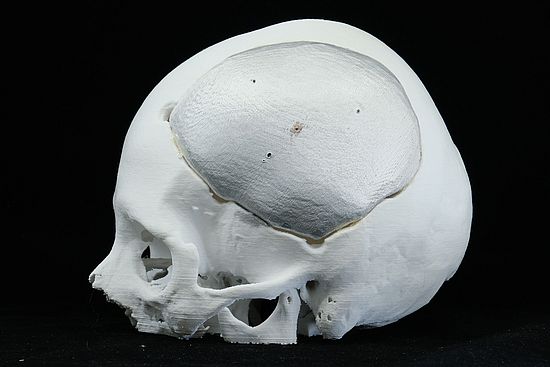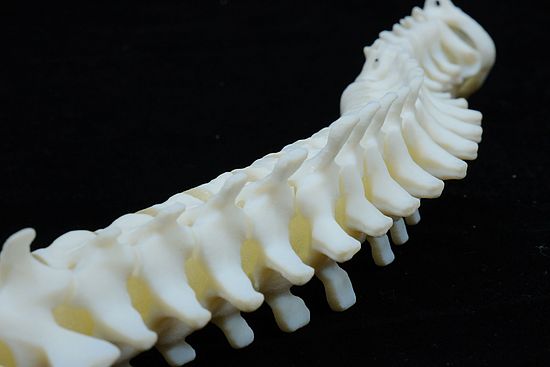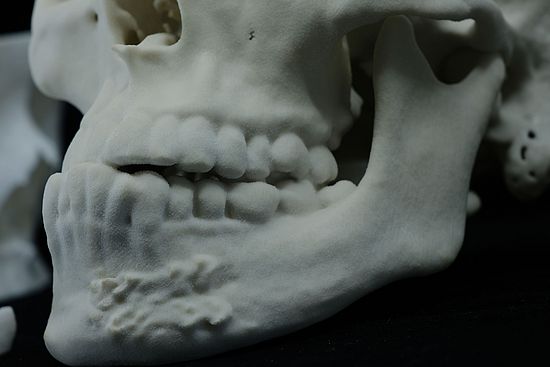Multimaterial Details

General Informations
Multimaterial 3D printing, combining materials like Vero, Tango, and Durus, revolutionizes versatile applications, particularly in research, medicine, and anatomical modeling. This innovative approach allows the creation of fully colored parts with intricate multimaterial mixes. The advantages include the ability to produce detailed anatomical models, transparent models with internal structures for medical research, vibrant and full-color prototypes for design iterations, and functional testing for prototypes with diverse mechanical properties.
However, there are considerations to bear in mind. Multimaterial printing introduces complexity, especially in support material removal, requiring additional effort for intricate compositions. Material compatibility is crucial, ensuring materials work well together and meet the intended application requirements. Printing time may be extended due to precise material transitions, a factor to consider in project timelines, particularly for large or intricate models. Despite these considerations, multimaterial 3D printing stands as a powerful tool with diverse applications in various fields.
Prinitng in Multimaterial Polyjet
Minimum Wall: 0.5 mm
Smalest Detail: 0.016 mm
Layer hight: 0.016 mm
Max Print size:1 300 x 200 x 150 mm
Tollerance: 0.1% min ±0.05 mm
Delivery Times: Typicaly 5-8 Businessdays

Pro`s and Con`s
Pro:
- Versatile Material Combinations: Multimaterial 3D printing allows for the combination of various materials like Vero, Tango, and Durus, enabling a wide spectrum of material properties within a single part.
- Complex Geometries: This technology offers design freedom to create highly intricate and complex geometries, making it suitable for applications that demand intricate internal structures or composite materials.
- Realistic Anatomical Models: Multimaterial printing excels in producing anatomical models with realistic properties. Medical professionals can benefit from full-head models, complete with tissues, bones, and internal structures for surgical planning and training.
- Functional Prototyping: It enables the creation of functional prototypes with multiple material properties. This allows for thorough testing and validation of designs that closely mimic the final product.
Con:
- Complex Support Removal: The presence of multiple materials may complicate support material removal, especially in intricate multimaterial compositions. Careful post-processing may be required.
- Material Compatibility: Compatibility between selected materials must be ensured to prevent issues like poor adhesion or undesirable interactions. Understanding how materials behave together is essential.
- Extended Printing Times: Multimaterial printing may extend printing times due to material transitions and layering intricacies. Larger or complex models may require more time for completion.
Applications of Multimaterial 3D Printing



- Medical and Anatomical Models: Multimaterial 3D printing is extensively used in the medical field to create anatomical models that accurately represent human tissues, bones, and internal structures. These models aid in surgical planning, medical training, and patient education.
- Functional Prototyping: Engineers and designers utilize multimaterial 3D printing to create functional prototypes with a combination of material properties. This enables thorough testing and validation of designs for various applications, such as consumer products and industrial components.
- Customized Prosthetics: Multimaterial 3D printing allows for the production of customized prosthetic devices tailored to an individual's specific needs. The combination of rigid and flexible materials ensures a comfortable fit and functional performance.
- Artistic and Creative Projects: Artists and designers leverage the versatility of multimaterial printing to bring their creative visions to life. It is used to produce intricate art pieces, sculptures, and figurines with a wide range of material properties and colors.
- Complex Mechanical Systems: Multimaterial printing is applied in engineering projects involving complex mechanical systems. Components with varying material properties can be integrated into a single assembly, optimizing performance and functionality.
- Educational Models: Educational institutions use multimaterial 3D printing to create interactive and informative models. These models enhance learning experiences by providing tangible representations of complex concepts, such as geological formations or biological structures.
- Architectural Prototyping: Architects and designers utilize multimaterial printing to create detailed architectural prototypes that showcase building designs, interior layouts, and landscaping features. These models aid in the visualization and presentation of architectural concepts.
- Automotive Prototypes: Multimaterial 3D printing plays a role in automotive design and prototyping. It allows for the creation of functional prototypes that combine rigid and flexible materials, simulating the performance of vehicle components.
- Electronics Enclosures: The ability to incorporate various materials within a single print is advantageous for creating custom electronics enclosures. This ensures optimal protection and organization of electronic components.
- Consumer Products: Multimaterial printing is employed in the development of consumer products, ranging from ergonomic tool handles with soft grips to complex gadgets with multiple material requirements.
These applications demonstrate the versatility and potential of multimaterial 3D printing across diverse industries, from healthcare and engineering to art and education. Its ability to combine different materials within a single print opens up new possibilities for innovation and customization.



